The Harmony of Bill Evans (2a) PERI’S SCOPE – HARMONIC ANALYSIS
“Peri’s Scope” is a perfect model to initiate a discussion of two-handed piano voicing principles that are root oriented. There are three rules or directions to follow:
- Use the root, third and seventh under the melody;
- Omit the fifth of the chord;
- For added, optional color, add a ninth, eleventh, or thirteenth
Best Sheet Music download from our Library.
Observe in all of the examples that the root is always the bass note and above the root you place the third, seventh, and melody. The voice leading alternates-EX. 1: R (root), 3rd, 7th leading to R, 7th, 10th in measures 1 and 2; or R, 10th, 7th leading to R, 7th, 10th in measure 3- depending upon the root movement.
In this tune the root movement is mostly down a fifth ( or up a fourth, i.e. II-V, III-VI of measures 1 & 2). I call this the diatonic cycle of fifths, and since “Peri’s Scope” does not modulate to another key, I rate it as a very imaginative diatonic composition for that reason.
Bill had a composer’s ear for variety and learned how to effectively use secondary dominants (see measures 7, 8, 14, 15, 16 & 20). This makes Peri’s Scope a challenge to the improviser. The challenge is unique because you meet the secondary dominants in different ways and in different parts of the phrase.

For example, in EX. 2 below, the IIIx (E secondary dominant seventh) lasts for two bars (7 & 8) and it’s the climax of the first phrase of the tune. It’s very sudden. It jumps out at us.

E7 (Sec. Dom.) E7 FMa7
From Bar 1 to 6 all we heard were diatonic chords in C Major, then “boom!”, we’re hit with an E713 for two bars. A real surprise. Look at EX. 2 and see and hear the colors:1 .E713, then E7b13, then E7 and finally E7+ 11 !!
At the end of the second phrase ( also eight measures), EX. 3 measures 14, 15 & 16, we meet three secondary dominants in a row, B713 to E9+11 to A713!!! The alterations on the Illx at measure 15 begin to look and sound like its tritone substitute, a B flat dominant seventh +5.
It is at this point the improviser has a choice to use one or the other: an E913 or Bb9+5. Here the progression becomes chromatic if you use the Bb9 and remains diatonic if you use the E911.
In this second phrase, measures 14-16, the improviser has a choice to think diatonically by using B7 to E7 to A7, or chromatically B7 to Bb7 to A7. A chromatic progression is one in which the root of the chord lies outside the key signature of the tune. All others are diatonic progressions.

In phrase three, at bar 20 of the final e1ght measures (EX. 4), we meet a secondary dominant for one-half of the measure only. It is the Vlx (A7b13) again on the 3rd and 4th beats. In Bill’s improvisation in this measure he plays B-flats, revealing to us that the chord on the downbeat of measure 20 is an E minor 7bs, a III half-diminished. It is only implied in this arrangement. The symbol for half-diminished is 0. The symbol x stands for secondary dominant.

In EX. 5, we can see at a glance how imaginatively Bill used the secondary dominants in different parts of each phrase. Here’s a look at the phrases by measure -number. – It will give you a quick overview of whererhe secondary dominants occur.
EX. 5 Peri’s Scope
Phrase One (measure s 1-8)

When I teach tunes, especially Bill’s, I always analyze the phrase structure first, then the key changes, if any (modulation principles), and then the use of secondary dominants, how they resolve and their duration. For example, the A7′ sat measures 16 and 20 resolve to the D minor chord, and we can infer that it is borrowed from the region or scale of D minor, which is only one flat removed from C Major, the scale or key of “Peri’s Scope.”
In other words, the A7 suggests the key, the scale or “the region of” D minor, which is very closely related to the tonic key of C Major. I include in my thinking the relative major keys when discussing minor key relationships and relative minor keys when discussing major keys.
This sounds confusing, I know, but as I analyze other compositions by Bill, you’ll begin to grasp the principles I’m trying to explain. In fact, if you pick up the Theory of Harmony by Arnold Schoenberg, you will find out where Bill learned these principles and you’ll be able to follow my explanations more intelligently.
Now go back and look at EX. 2, measures 8 & 9. The E7 at measure 8 resolves to an F Ma7 at measure 9. This E7 is borrowed from the scale of A minor, the relative minor of C Major, and it resolves deceptively, i.e. V to VI, or up a half step” as if” it were in the key of A minor.
These are important considerations when studying this tune in terms of its horizontal or linear implications. We know that E7 is the dominant of A Major and A minor. But we probably wouldn’t improvise on an A major scale at this point for two reasons: 1) the chords surrounding the E7 do not suggest a progression in A major, and 2) the resolution at measure 9 would have to be to an F# m7, the VI of A major, a deceptive resolution in the key of A major!
Let’s get back to the voicing concepts. In EX. 2, measures 7 & 8, the voicing of the E7 is root, 7th, 10th (or 3rd), and in measure 9, the F Ma7 and G7 voicings are the same (R, 7th, 10th) because the root movement is stepwise, lllx to IV to V. When progressions move by steps (IV-V or 11-111, etc.), you can often move or lead the voices parallel. This makes for smoothness and clarity in the rendition of the tune. Any song will lend itself to this treatment. I call this the 3-note voicing concept and I learned it from Bill’s model, “Peri’s Scope.”
In EX. 3, measure 14, the B7 is voiced root, 7th, 10th resolving to E7. The E7 here is the only voicing in our model that has no root. Or does it? I think Bill meant Bb7+5 at this point (last beat of measure 14). The B-natural in the bass was supposed to be a B-flat but was delayed to the next bar, measure 15, second beat.
What do you think? If you accept my analysis, then the voicing to the Bb7 is parallel -R, 7th, 10th-and the resolution from Bb7 to the A7 in measure 16 is also parallel-R, 7th, 10th. Here’s a look at these three chords in isolation (EX. 6). Play them!

In EX. 7, measure 11, we see another variation in Bill’s voicings, and a very simple one at that. He reduces the left hand voicing to two notes: Rand 7th on the downbeat (D m7) and then R, 3rd on the third beat (G 7), while the melody in the right hand is harmonized in thirds. This gives us relief from the five part voicings in phrase one.
Later performames of this piece, Bill changed measure 12 to Gm 7, C7, suggesting that the middle phrase (phrase two, measures 9-16) can be heard as a modulation to the key of F Major, a very closely related key to C Major, one fifth down and one flat away from C Major.

These root-oriented 3-note voicing concepts formed the foundation of Bill’s early style and permeated his later playing, as you will see in my analysis of tunes like “B Minor Waltz.”
Please, subscribe to our Library.
If you are already a subscriber, please, check our NEW SCORES’ page every month for new sheet music. THANK YOU!
In EX.8, measures 20 & 21, we observe more variety, the block chord voicing with melody on top and bottom. Bill knew his jazz piano history. I heard him play Boogie Woogie and Teddy Wilson styles in 1951. The block chord influences are from Milt Buckner and George Shearing.

And Bill even knew how to “sit” on the quarter note a la Lester Young at measure 19 to make it swing in the old style ( EX. 9). Listen to Lester Young’s solos on “Taxi War Dance” or “Blue Lester” with the Count Basie Orchestra for the quarter note swing “feel.”

Notice the Boogie Woogie influence in the left hand of measure 19, the ultimate in sophistication. Bill truly “ingested” all the jazz styles of the past, and they appear spontaneously in his writing and playing in extremely subtle ways.
As a student of composition in the 50s, he “ingested” all the classical music of the past. In 1951, I heard him sightread, at the piano, the orchestral score to Stravinsky’s “Rite of Spring.” Of course, Bill’s intuition is at play here; this is a welcome relief from all that rhythmic displacement, tension and syncopation in the previous phrase (EX. 10, measures 13-16.)


I have made EX. 10 easier to learn: Let’s look at my voicing-arrangement (EX. 11) to explain what I mean. What I did was to notate in 6/8 what Bill notated as rhythmic displacement. I have subdivided the beat and createdrour measures in 6/8outofBill’s three measures in4/4.

Bill may have conceived of this tune diatonically, but his use of rhythmic displacement in phrase two makes the tune unmanageable for a beginner in improvisation unless_he “evens out” those measures (see EX. 5, measures 13-16). Each phrase has wonderful variety of harmonic color (the addition of 9ths, 11ths, and 13ths ), and unusual phrasing ‘· in the melody and in the piano voicings.
To conclude the article and at the same time offer you a recapitulation of the 3-note concept, here are two examples I use in teaching the Blues in F. In EX. 12, which you can analyze for yourself, you will see that I connect the chords by observing the voice leading rules explained earlier in this article.
Analyze also EX. 13 and observe the addition of one color tone (9,11,13) above each of the 3-note voicings. (I make students write as many variations as possible using the color tones). Try singing “Billie’s Bounce” melody while playing examples 12 & 13; or “Blue Monk,” or have a friend play and improvise with you.

EX. 14 is the opening theme from the “Concertina for Strings and Piano,” third movement, titled “Resurrection”, orchestrated brilliantly by Jack Six and premiered in December 1980, in Plainfield, New Jersey, Bill’s hometown. The Concertina is dedicated to Bill’s memory. In “Resurrection” you have a 3-note voicing arrangement of this very simple theme and yet it still sounds complete and satisfying.
Incidentally, in this third movement, the piano soloist is called upon to invent variations on this theme, therefore the 3-note setting in the exposition of the movement creates a clear and solid statement of the theme. Bill was a master at arranging the opening chorus to set the mood for the listener in a positive and clear manner.

The final example (EX. 15) is an illustration of a more elaborate method of study for “Peri’s Scope” and all of Bill’s tunes, and in fact any tune, and that is to arrange the progression in 4, 5, 6, 7, or 8 parts in half-note chorale style.
Bill would write out three or four examples like this and then practice them in all keys. For “Peri’s Scope,” I used the 3-note concept, adding a fourth part chosen by” ear,” but notice that the soprano or top note I have chosen suggests or outlines the melody shown in the top staff. This is a good first step to get “inside” the tune. In the articles that follow, I will show many other procedures.

Browse in the Library:
| Artist or Composer / Score name | Cover | List of Contents |
|---|---|---|
| A dozen A Day Book 1 Technical exercises for the piano |
 |
A dozen A Day Book 1 Technical exercises for the piano |
| A dozen A Day Book 2 Technical exercises for the piano |
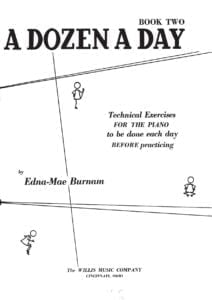 |
|
| A dozen A Day Book 3 Technical exercises for the piano |
 |
|
| A dozen A Day Book 4 Technical exercises for the piano |
 |
|
| A dozen A Day Mini Book Technical exercises for the piano |
 |
|
| A dozen Day Preparatory Book Technical exercises for the piano |
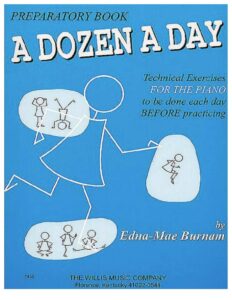 |
|
| A Farewell To Arms Love Theme From A Farewell To Arms film by Mario Nascimbene Francis Webster 1957 |
 |
|
| A Felicidade (Antonio Carlos Jobim) | ||
| A Festival Gathering Of Carols (Musescore File).mscz | ||
| A Fine Frenzy – Almost Lover |
 |
|
| A Fistful of Dollars (Ennio Morricone) | ||
| A Generative Theory Of Tonal Music by Fred Lerdahl and Ray Jackendoff (Book) |
 |
|
| A Guide To Guitar Chords by Curt Sheller |
 |
A Guide To Guitar Chords by Curt Sheller |
| A Guide To Musical Analysis by Nicholas Cook (Book) |
 |
|
| A Handbook Of Piano Playing (By Eric Hope) (1962) |
 |
|
| A Heart Full Of Love (Musescore File).mscz | ||
| A love suicide (Yutaka Minobe) | ||
| A Love Supreme (by Ashley Kahn) The story of john Coltrane’s signature album (Book) |
 |
|
| A Media Luz (Edgardo Donato) | ||
| A Modern Approach To Jazz Rock And Fusion For Guitar with Tablature |
 |
A Modern Approach To Jazz Rock And Fusion For Guitar |
| A Modern Method For Guitar (Berklee) 1 by William Leavitt |
 |
A Modern Method Berklee 1 |
| A Modern Method For Guitar (Berklee) 2 by William Leavitt |
 |
A Modern Method For Guitar (Berklee) 2 |
| A Modern Method For Guitar (Berklee) 3 by William Leavitt |
 |
A Modern Method For Guitar (Berklee) 3 |
| A MOZART REINCARNATED (Ennio Morricone) |
 |
|
| A Mozart Reincarnated by Ennio Morricone (Musescore File).mscz | ||
| A New Approach To Ear Training by Leo Kraft (BOOK) |
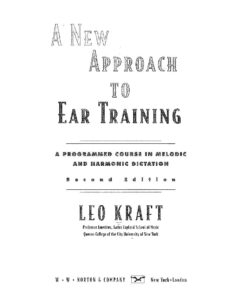 |
|
| A New Approach To Piano Technique (By Ruth A. Dickerson) (1962) |
 |
A new approach to piano technique |
| A Night In Tunisia – Dizzy Gillespie.mscz | ||
| A Pedal Method For The Piano (By Albert F Venino) (1893) |
 |
|
| A Popular Account Of Ancient Musical Instruments And Their Development by William Lynd (Book 1897) |
 |
|
| A Rockin’ Christmas Piano Vocal Guitar |
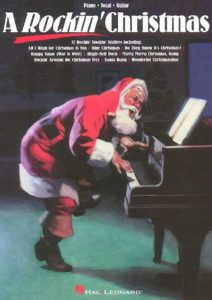 |
20 songs to sing on a rockin’ Christmas Eve Includes: All I Want for Christmas Is You * Grandma Got Run Over by a Reindeer * Happy Xmas (War Is Over) * Jingle-Bell Rock * Merry Merry Christmas Baby * Rockin’ Around the Christmas Tree * Santa Baby & moreRockin Christmas |
| A Single Man – George’s Waltz (Shigeru Umebayashi) | ||
| A Single Man – Stillness of the Mind (Abel Korzeniowski) | ||
| A Smooth Jazz Christmas – Mellow Seasonal Favorites for Piano arr. Roger House |
 |
A Smooth Jazz Christmas – Mellow Seasonal Favorites for Piano arr. Roger House |
| A Song For You – Leon Russell Ray Charles (Musescore File).mscz | ||
| A Star Is Born – Always Remember Us This Way Lady Gaga |
 |
|
| A Star Is Born – Shallow Lady Lady Gaga |
 |
|
| A Tale Of Two Sisters Ost – Epilogue Piano Solo |
 |
|
| A Thousand Years – Twilight OST (Christina Perri) | ||
| A Time For Love – Johnny Mandel |
 |
|
| A Time For Us – Guitar TABlature |
 |
|
| A Time For Us (Love Theme from Romeo and Juliet) Nino Rota |
 |
|
| A Time For Us (Romeo and Juliet OST) Nino Rota | ||
| A Touch Of Jazz 14 well-known hymns, gospel songs and contemporary praise songs by Wolaver Bill |
 |
A Touch Of Jazz 14 well-known hymns, gospel songs and contemporary praise songs by Wolaver Bill |
| A Tribute To Ella Fitzgerald Piano Vocal Guitar |
 |
A tribute to ELLA FITZGERALD |
| A Walk To Remember – Only Hope | ||
| A whiter shade of pale – Procul Harum | A whiter shade of pale – Procul Harum | |
| AaRON U-turn Lili Piano |
 |
|
| Ab Ovo – Joep Beving (Musescore File).mscz | ||
| Abba – Abba Gold – Greatest Hits |
 |
ABBA Gold Geatest Hits booksong sheet music |
| Abba – Chiquitita | ||
| Abba – Dancing Queen | ||
| Abba – Fernando | ||
| Abba – I Have A Dream | ||
| Abba – Like An Angel Passing Through My Room | ||
| Abba – Mamma Mia | ||
| Abba – Slipping Through My Fingers | ||
| Abba – Thank You For The Music | Abba-Thank-You-For-The-Music 1st page | |
| ABBA – Thank You For The Music (Piano Vocal Guitar) | ABBA – Thank You For The Music (Piano Vocal Guitar) | |
| ABBA – Thank You For the Music (Piano vocal Guitar) (Musescore File).mscz | ||
| Abba – Thank You For The Music Piano & vocal | Abba – Thank You For The Music-abba-satb | |
| Abba – The Winner Takes It All | ||
| ABBA Dancing Queen Easy Piano Solo |
 |
|
| ABBA Fernando (Piano Solo arr.) |
 |
|
| ABBA Fernando (Piano Solo arr.).mscz | ||
| ABBA Greatest Hits |
 |
ABBA GREATEST HITS SHEET MUSIC BOOK |
| ABBA I Have A Dream |
 |
|
| Abba The Very Best Vol 1 Easy Piano Hans Gunter Heumann Pop Classics For Piano |
 |
Abba The Very Best Vol 1 Easy Piano |
| Abba The Very Best Vol 2 Easy Piano Hans Gunter Heumann Pop Classics For Piano |
 |
Abba The Very Best Vol 2 Easy Piano |
| Abbey Lincoln Songbook |
 |
Abbey Lincoln Songbook |
| Abbey Lincoln Songbook Piano Vocal Guitar Chords |
 |
Abbey Lincoln Songbook Piano Vocal Guitar Chords |
| Abdullah Ibrahim – The Piano World Of |
 |
Abdullah Ibrahim, The Piano World Of |
| Abdullah Ibrahim The African Piano Of Abdullah Ibrahim Vol 1 |
 |
Abdullah Ibrahim The African Piano Of Abdullah Ibrahim Vol 1 |
| Abdullah Ibrahim The Wedding (piano solo transcription sheet music, partition) |
 |
|
| Abel Korzeniowski – Death Is My Heir (from Romeo and Juliet) |
 |
|
| ABRSM Jazz Piano Pieces Grade 1 to 5 |
 |
ABRSM Jazz Piano Pieces Grade 1 to 5 ABRSM Jazz Piano Pieces Grade 5ABRSM Jazz Piano Pieces Grade 5 |
| ABRSM Piano Exam Pieces Grade 1 (2016) |
 |
ABRSM Piano Exam Pieces Grade 1 (2016) |
| ABRSM Piano Scales, Arpeggios Grade 8 |
 |
|
| ABRSM Piano Scales, Arpeggios and broken chords Grade 1 |
 |
|
| ABRSM Piano Scales, Arpeggios and broken chords Grade 4 |
 |
ABRSM Piano Scales, Arpeggios and broken chords Grade 4 |
| ABRSM Piano Scales, Grade 2 A Guide for Students and Teachers | ABRSM Piano Scales, Grade 2 A Guide for Students and Teachers | |
| ABRSM – Time pieces for guitar vol. 1 |
 |
|
| ABRSM – Time pieces for guitar vol. 2 |
 |
|
| ABRSM 2017 18 Piano Exam Pieces Grade 1 |
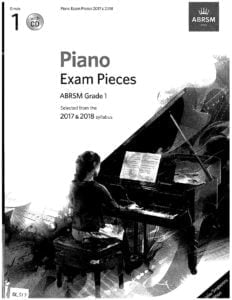 |
ABRSM 2017 18 Piano Exam Pieces Grade 1 |
| ABRSM 2017 18 Piano Exam Pieces Grade 2 |
 |
ABRSM 2017 18 Piano Exam Pieces Grade 2 |
| ABRSM 2017 18 Piano Exam Pieces Grade 3 |
 |
|
| ABRSM 2017 18 Piano Exam Pieces Grade 4 |
 |
|
| ABRSM 2017 18 Piano Exam Pieces Grade 5 |
 |
|
| ABRSM 2017 18 Piano Exam Pieces Grade 6 |
 |
|
| ABRSM 2017 18 Piano Exam Pieces Grade 7 |
 |
|
| ABRSM 2017 18 Piano Exam Pieces Grade 8 |
 |
|
| ABRSM 2021-2022 Piano Exam Pieces Grade 1 |
 |
|
| ABRSM 2021-2022 Piano Exam Pieces Grade 2 |
 |
|
| ABRSM 2021-2022 Piano Exam Pieces Grade 3 |
 |
|
| ABRSM 2021-2022 Piano Exam Pieces Grade 5 |
 |
|
| ABRSM 2021-2022 Piano Exam Pieces Grade 6 |
 |
|
| ABRSM 2021-2022 Piano Exam Pieces Grade 8 |
 |
|
| ABRSM 2021-2022 Piano Exam Pieces Initial Grade |
 |
ABRSM 2021-2022 Piano Exam Pieces Initial Grade |
| ABRSM Aural Training In Practice Book 1 Grades 1 to 3 |
 |
|
| ABRSM Aural Training In Practice Book 2 Grades 4 and 5 |
 |
|
| ABRSM Discovering Music Theory (Complete) Grades 1 to 5 Workbook by Simon Rushby (2020 Exams) |
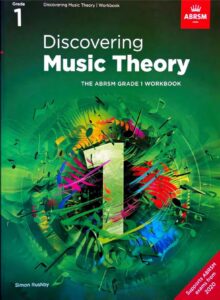 |
ABRSM Discovering Music Theory (Complete) Grades 1 to 5 Workbook by Simon Rushby (2020 Exams) contents |
| ABRSM Erster Verlust Grade 4 ABRSM Piano Exam Pieces 2021 & 2022 |
 |
|
| ABRSM Etude In A Minor – Dmitry Kabalevsky ABRSM Grade 4 Piano Exam Pieces 2021 & 2022 |
 |
|
| ABRSM Grade 2 – Inter-City Stomp byChristopher Norton From Microjazz Collection (Sheet Music) |
 |
|
| ABRSM Initial Grade Piano Exam Pieces 2023 2024 |
 |
|
| ABRSM Minuet and Trio D 41 No 21 – Franz Schubert ABRSM Grade 4 Piano Exam Pieces 2021 & 2022 |
 |
|
| ABRSM More Music Theory Sample Papers Grade 5 For New Format |
 |
|
| ABRSM Music Theory In Practice, Grade 1 (Eric Taylor) |
 |
|
| ABRSM Music Theory In Practice, Grade 2 (Eric Taylor) |
 |
|
| ABRSM Music Theory Past Papers Grade 1 2004 |
 |
|
| ABRSM Music Theory Past Papers Grade 4 2016 |
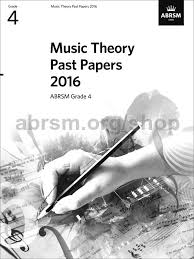 |
|
| ABRSM Music Theory Past Papers Grade 5 2012 |
 |
|
| ABRSM Music Theory Past Papers Grade 6 2013 |
 |
|
| ABRSM Nikki Iles Danny Boy ABRSM Piano Exam Grade 8 2023 Jazz Piano arr. inspired by Bill Evans |
 |
|
| ABRSM Nikki Iles Friends Book 1 Intermediate Jazz Pieces For Piano |
 |
ABRSM Nikki Iles Friends Book 1 Intermediate Jazz Pieces For Piano |
| ABRSM Nikki Iles Friends Book 2 Intermediate To Advanced Jazz Pieces For Piano |
 |
ABRSM Nikki Iles Friends Book 2 Intermediate To Advanced Jazz Pieces For Piano |
| ABRSM Nikki Iles The Elephant Parade ABRSM piano Exam |
 |
|
| ABRSM Piano 2025-2026 Grade 8 C3 A Nightingale Sang in Berkeley Square by Sherwin – Maschwitz |
 |
|
| ABRSM Piano Exam 2007-2008 Grade 3 |
 |
|
| ABRSM Piano Exam 2015-16 Grade 3 |
 |
ABRSM Piano Exam 2015-16 Grade 3 |
